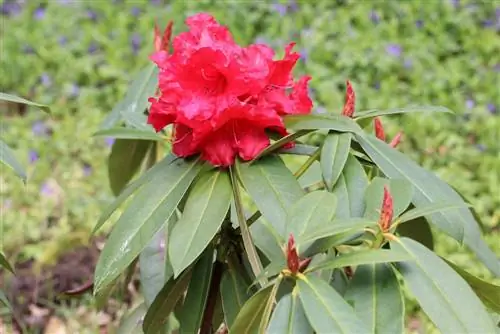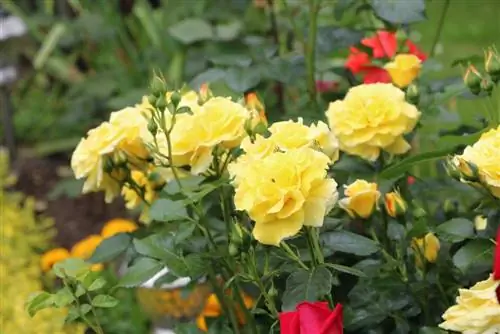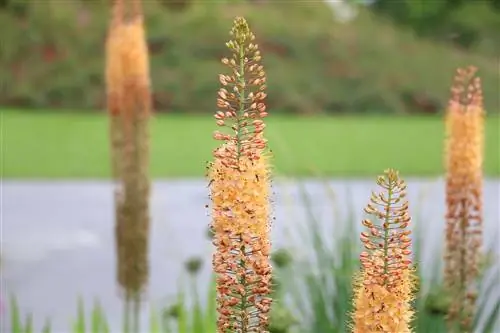- Author admin [email protected].
- Public 2023-12-17 03:39.
- Last modified 2025-01-24 12:45.
Opinions often differ when it comes to rhododendrons. Some love the plant passionately, others can no longer see it. Of course there are reasons for this: The rhododendron is probably the most common flowering shrub in our gardens. Of course, you can get tired of the plant at times. On the other hand, hardly any other plant has such a lush variety of flowers.
Rosenbaum
The name rhododendron comes from ancient Greek and means rose tree. The name refers to the enormous variety of flowers that is the distinguishing feature of this plant genus. There are more than 1,100 species of rhododendrons worldwide. The main distribution area is Asia. A total of ten native species can be found in Europe. Botanically speaking, they are all woody plants. They are also shallow-rooted. Rhododendrons are also among the most popular garden plants. In the year 2000, German tree nurseries alone produced and sold around 20 million rhododendrons. This puts the ornamental shrub in the same league as the rose, which enjoys similar popularity.
Planting time
If you want to have fun with rhododendrons in your garden, you should be very careful when planting them and definitely focus on the needs of the plant. In fact, this is where most mistakes are made - mistakes that are then difficult to correct. Rhododendrons can always be planted outside of the frost period. The ideal times for this are from the beginning of September to mid-November (autumn planting) and from the beginning of March to mid-May (spring planting). Autumn planting is generally recommended. It has the great advantage that new roots form more quickly. In addition to the right time, the location and soil conditions play a crucial role in the prosperity of rhododendrons.
Location
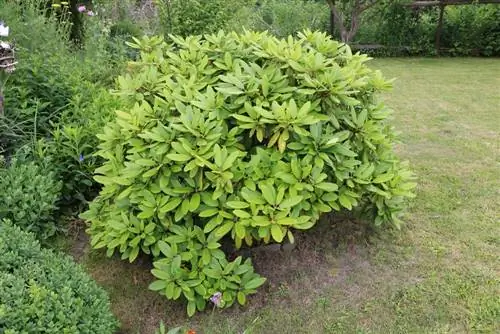
The natural environment for rhododendrons in the wild is sparse forests. It follows that the plant likes partial shade and this fact must be taken into account when choosing a location. Under no circumstances should it be directly exposed to the blazing midday sun. On the other hand, the location should not be too shady either. Rhododendrons need a lot of light to develop their flowers. If this is missing, the number of flowers will be rather meager. The ideal combination in the garden is with a so-called shade tree such as the Scots pine. Its fine needles provide shade, but still allow enough sunlight through. In terms of root formation and nutrition, the Scots pine does not compete with rhododendrons.
Floor
As already mentioned, rhododendrons are shallow-rooted. A loose soil that is as rich in humus as possible is therefore mandatory. Soils that are heavily saturated with clay are generally not suitable for rhododendrons because the plant's fine roots cannot spread. If the location in the garden is suitable, but the soil is too clayey or not loose enough, it should be replaced. To do this, dig a hole about 50 cm deep with a diameter of about 150 cm for each plant. It is then filled again with a mixture consisting of equal parts bark compost and sand. A layer of coarse sand or fine pebbles is also recommended, as this ensures better water drainage and thus helps avoid waterlogging. However, if the soil is already relatively loose and sandy, bark mulch and cow manure should be incorporated before planting.
Planting
Rhododendrons purchased from specialist retailers are usually available in a planter or with a bare root ball. Before planting, we first dig a hollow into which the root ball fits. However, the depression should not be too deep. It is recommended that the upper edge of the bale is approximately level with the ground surface.
Tip:
Rhododendrons are generally better planted too high than too deep. Planting too deep can result in a lack of oxygen supply and thus the death of the sensitive roots.
Once the bale is placed in the trough, a mixture of excavated soil and humus is loosely distributed around it in a ratio of one to one. Then you only tread the soil very little and very carefully before watering it well. Immediate fertilization with around two handfuls of horn shavings and a layer of bark mulch around five centimeters thick are also recommended. The latter reduces the risk of the soil drying out too quickly. If several rhododendrons are planted at the same time, certain distances must be observed. In principle, a minimum distance of 50 cm must be maintained. For particularly large species this is around 100 cm.
Care
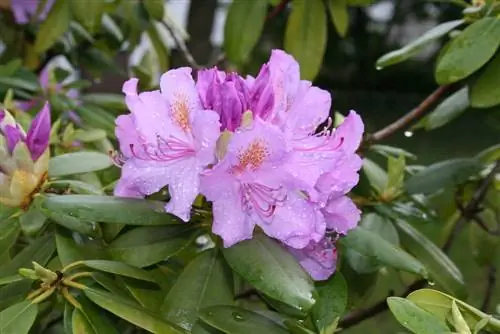
When caring for rhododendrons, watering, fertilizing and cutting play a particularly important role. Basically, the plant is relatively easy to care for. For example, a cut is not absolutely necessary.
Pouring
Rhododendrons should only be watered with rainwater - unless tap water is extremely low in lime. When watering, you should always make sure that the soil is moist, but not too wet. Waterlogging should be avoided at all costs. It is advisable to regularly check the moisture of the soil around the plant and water it if necessary.
Fertilize
For rhododendrons to thrive, they also need to be fertilized regularly. Fertilization is best done in early spring. This provides the plants with enough nutrients to produce a lush green color and as many buds as possible. Fine horn shavings or an organic-based rhododendron fertilizer are suitable as fertilizers. Both are simply spread in the root area.
Note:
If the plant has been mulched, the mulch layer must be removed before fertilizing and then reapplied.
Cutting
As already mentioned, snowing the rhododendron plant is not absolutely necessary. However, withered flowers should be removed with a sharp knife or secateurs. Anyone who decides to do a topiary cut or a severe pruning, for whatever reason, must make sure that the plant is really well rooted. Otherwise there is a risk that it will no longer sprout properly next spring. If in doubt, it is better to avoid heavy cutting and, if necessary, only remove dead wood. The best time for pruning is autumn.
Wintering

Rhododendrons, which are native to us and grow, are hardy. However, it can happen that evergreen species are affected by cold winds and strong winter sun. If the winter is particularly cold, we recommend wrapping the entire plant under fleece as a precaution. This way you are definitely on the safe side. In principle, rhododendrons can remain outdoors and in the ground even during the rust period.
Diseases and pests
The most common disease in rhododendrons is so-called shoot dieback. As the name suggests, it causes certain shoots to die. In extreme cases, the entire plant can be affected. The cause of the disease is usually waterlogging. The best way to combat them is to check the watering or the soil. If in doubt, the floor must be replaced or drainage installed for better water drainage. When it comes to pests, the rhododendron leafhopper in particular can quickly become a major problem. She prefers to lay her eggs in flower buds. A certain fungus is transmitted, which inevitably leads to the death of the buds. The best way to combat the rhododendron cicada is with special products from specialist retailers.

